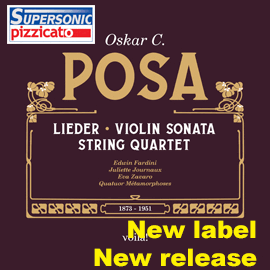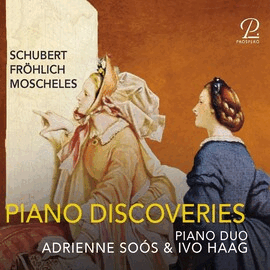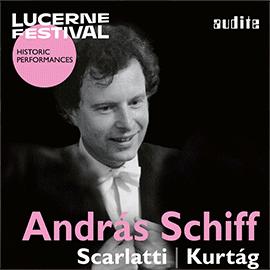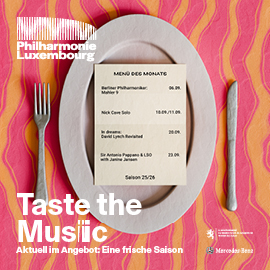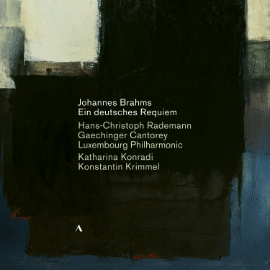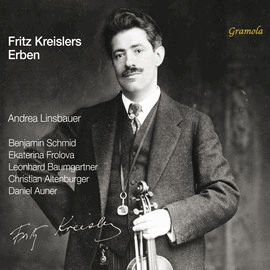Die Sonaten für Violine und Klavier von Beethoven sind ein Muster für die gleichberechtigte Behandlung der beiden Partner. Bezeichnete er auch die drei Werke op. 12 als Sonate per il clavicembalo o Forte-Piano con Violino, also zuerst das Tasteninstrument benennend und mit der Angabe des barocken Cembalos als Alternative noch der Historie verpflichtet, so spricht die Musik bereits eine in die Zukunft gerichtete Sprache. Umso mehr bieten die neun in kurzer Folge komponierten Sonaten und die zehnte als Nachkömmling ein faszinierendes Dialogangebot für die beiden Instrumente.
Diese Zweisamkeit haben die in langjähriger musikalischer Partnerschaft verbundenen Lena Neudauer und Paul Rivinius in ihr Spiel übernommen. Dabei muss man die Vertrautheit als spannendes und inspirierendes Miteinander verstehen und nicht als behäbige und langweiliges Nebeneinander. Die Interpreten führen einen immerwährenden Dialog, werfen sich Fragen und Antworten zu, umspielen einander, lassen auch mal die Emotionen hochkochen, um dann mal kurz Luft zu holen, jedoch nur, um danach wieder loszulegen.
Dass in solchen intensiven Diskussionen sozusagen nicht jedes Wort druckreif ist, tut dem keinerlei Abbruch. Ein Ton kann auch mal im Ausdruck oder der Technik spröde wirken. Und auch minimale agogische Freiheiten vermitteln viel mehr ein Gefühl der Spontaneität und der völligen Hingabe bei gleichzeitiger Beherrschung der Musik. Mag man auch die Unterschiede zwischen den frühen Beiträgen und den späten Werken erleben, so ist das den Kompositionen geschuldet und nicht etwa unausgegorenem Spiel.
Dabei formen sie die Sonaten als elegante Gebilde. Akzente und Betonungen werden gezielt herausgehoben und nicht gehämmert. So vermitteln sie den Eindruck, der dem kultivierten Gespräch eines Streichquartetts üblicherweise zugeschrieben wird. Damit gelingt ihnen die ausgewogene Darstellung der Werke, aber vor allem auch im Miteinander der Musiker. Damit erreichen sie auch je Sonate sowie auch über alle Werke eine gleichbleibende kraftvolle Sicht, die immer die Aufmerksamkeit fordert und trotzdem nie in Atemlosigkeit mündet.
Das sonst immer höchst akkurate Label cpo hat im Begleittext bei der allgemeinen Einleitung zu den Sonaten op. 12 im ersten Satz zur D-Dur Sonate einen falschen Bezug auf die Sonaten op. 30 genommen, aber dann wieder richtig die Tonarten der op. 12-Gruppe genannt.
Beethoven’s sonatas for violin and piano are a model for the equal treatment of the two partners. While he also described the three works op. 12 as Sonate per il clavicembalo o Forte-Piano con Violino, i.e. first naming the keyboard instrument and still committed to history with the indication of the Baroque harpsichord as an alternative, the music already speaks a future-oriented language. All the more reason why the nine sonatas composed in quick succession and the tenth as an afterthought offer a fascinating dialog for the two instruments.
Lena Neudauer and Paul Rivinius, who have enjoyed a musical partnership of many years, have incorporated this togetherness into their playing. This intimacy must be understood as an exciting and inspiring togetherness and not as a sedate and boring juxtaposition. The performers engage in a perpetual dialog, throwing questions and answers at each other, playing around each other, sometimes letting emotions boil over, only to take a quick breath and then get going again.
The fact that not every word in such intensive discussions is ready for print, so to speak, does not detract from this. A tone can sometimes seem brittle in expression or technique. And even minimal agogic freedoms convey much more of a feeling of spontaneity and complete dedication with simultaneous mastery of the music. Although one may experience differences between the early contributions and the late works, this is due to the compositions and not to half-baked playing.
They shape the sonatas as elegant structures. Accents and emphases are deliberately emphasized and not hammered out. In this way, they convey the impression that is usually attributed to the cultivated conversation of a string quartet. This enables them to achieve a balanced presentation of the works, but above all in the interaction between the musicians. In this way, they achieve a consistently powerful vision for each sonata as well as across all the works, which always demands attention and yet never leads to breathlessness.
In the general introduction to the sonatas op. 12, the otherwise always highly accurate label cpo has made an incorrect reference to the sonatas op. 30 in the first movement of the D major sonata in the accompanying text, but then again correctly named the keys of the op. 12 group.







